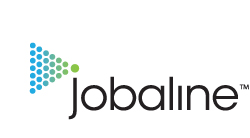 I’ve been trying to figure out what to make of Jobaline.
I’ve been trying to figure out what to make of Jobaline.
In some respects, what the recruitment tech vendor offers is just another — if more clever — screening variant intended to weed out resume spammers. Interesting, but no game-changer as I told Jobaline founder and CEO Miki Mullor.
What did catch my attention, though, is that Jobaline also attempts to rank applicants on their “seriousness.” An elusive concept to be sure, Mullor says “People who are more serious about a job will take more time on the website.”
Mullor wouldn’t detail everything that goes into the Jobaline mixer, but the amount of time a candidate spends responding to questions is one of the measures, as is the number of jobs a candidate has applied for. Out of the crunching comes a score Mullor says suggests the candidate’s level of interest in the job.
Before we go any further, some background.
Jobaline launched a few months ago on the premise that it could cut the time recruiters spend reviewing resumes, yet still find quality candidates. It does this by having recruiters and hiring managers mark up their job postings so candidates have to provide specifics for the most important of the requirements. Jobaline codes these posts, which can be placed anywhere: corporate site, job boards, etc.
Both sides can come up winners here. The employer flags the most important requirements, while the candidate can amplify what’s in the resume, or offer details that might not be in the resume at all. These micro-resumes, as Jobaline calls them, can prompt some candidates to opt-out and resume spammers aren’t very likely to start filling in response boxes.
However, it’s hard to see how that would compensate for the work involved in reviewing all the extra information. Heck, if you read my post yesterday about recruiters not even reviewing the resumes of those they want to phone screen, it’s evident that the last thing recruiters want is more to read.
 Perhaps needless to say, Mullor makes the point that by reviewing just the responses to the tagged requirements recruiters can quickly build a short list. It’s the second piece of this, though, that’s particularly intriguing. Jobaline ranks the candidates on their seriousness.
Perhaps needless to say, Mullor makes the point that by reviewing just the responses to the tagged requirements recruiters can quickly build a short list. It’s the second piece of this, though, that’s particularly intriguing. Jobaline ranks the candidates on their seriousness.
The obvious question is whether this score has any significance. Neither the content of the responses nor the candidate resume are considered. Pure and simply, Jobaline looks only at the mechanics of the process to create a behavioral score.
It doesn’t take an I/O psychologist to wonder about the validity of the score. Mullor acknowledges that Jobaline is too new to have enough data to be able to say what or even if there is any correlation between the seriousness score and candidate quality or interest. Anecdotally, he says, some of the clients who are testing the service are reporting good results. (Recruiters themselves can affect the score, as they review the micro-resumes.)
What I find interesting is that Jobaline is part of what seems to be the cusp of an emerging trend to adapt behavioral marketing — and search — concepts to recruitment. It’s probably not just coincidence that Jobaline and Bullhorn partnered a couple months ago.
Bullhorn, a dominant force in the staffing and sourcing world, not long ago introduced Reach. Among its many features is a predictive formula that looks at a recruiter’s LinkedIn network and lists those who may be preparing for a job search. It, too, takes its cues from search and marketing, looking at such behaviors as profile updates and new recommendations.
Intuitively, what Bullhorn Reach does makes sense. The more time I spend getting my profile in shape and posting content, particularly if this is a change from what I’ve been doing in the past, then it seems reasonable to say something is up. Whether I’m preparing for a job search or simply making good on my New Year’s resolution is still up in the air. It will require validation to establish the degree of correlation. But for not now, Bullhorn Reach simply raises a flag that a recruiter might want to pursue.
With Jobaline now available to Bullhorn users, Mullor points out that it adds a second data point for recruiters. Bullhorn scores resumes on keyword matching and other elements to create a ranked list of applicants. Jobaline, Mullor notes, is “an additional layer of scoring.”
Does it make a difference? It will be sometime before Jobaline is able to collect enough data to know. Even so, it’s an indicator that vendors are beginning to adopt behavioral measures for talent acquisition.
Some years ago, Yahoo! HotJobs talked about doing this very thing. By analyzing both the profile activity of its members and their Yahoo! search behavior, HotJobs was thinking it could predict who was about to become an active job seeker. I don’t know if it ever went beyond a thought exercise, although something similar was tested for predicting car-buying behavior and it turned out well.